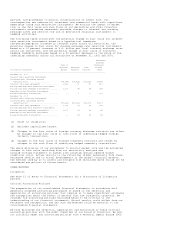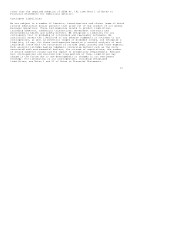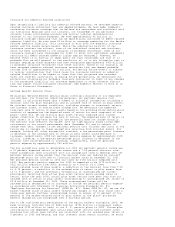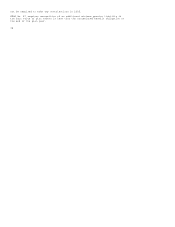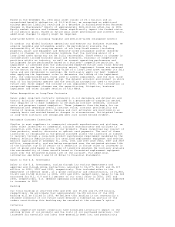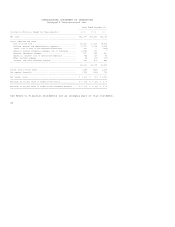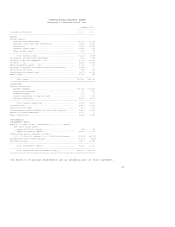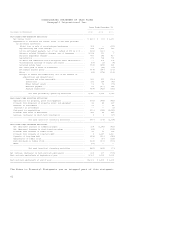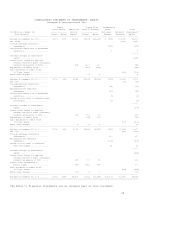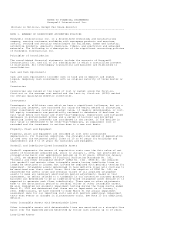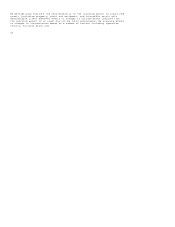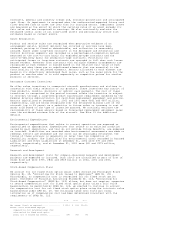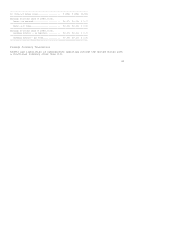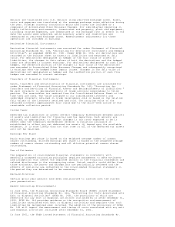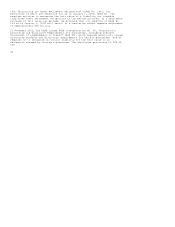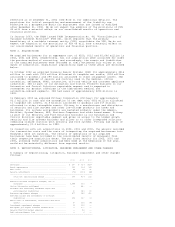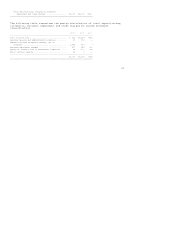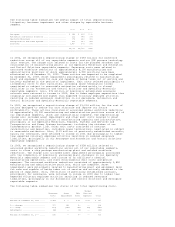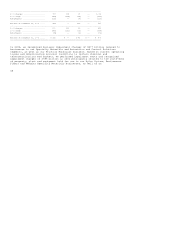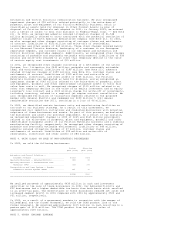Honeywell 2002 Annual Report Download - page 236
Download and view the complete annual report
Please find page 236 of the 2002 Honeywell annual report below. You can navigate through the pages in the report by either clicking on the pages listed below, or by using the keyword search tool below to find specific information within the annual report. NOTES TO FINANCIAL STATEMENTS
Honeywell International Inc.
(Dollars in Millions, Except Per Share Amounts)
--------------------------------------------------------------------------------
NOTE 1. SUMMARY OF SIGNIFICANT ACCOUNTING POLICIES
Honeywell International Inc. is a diversified technology and manufacturing
company, serving customers worldwide with aerospace products and services,
control, sensing and security technologies for buildings, homes and industry,
automotive products, specialty chemicals, fibers, and electronic and advanced
materials. The following is a description of the significant accounting policies
of Honeywell International Inc.
Principles of Consolidation
The consolidated financial statements include the accounts of Honeywell
International Inc. and all of its subsidiaries in which a controlling interest
is maintained. All intercompany transactions and balances are eliminated in
consolidation.
Cash and Cash Equivalents
Cash and cash equivalents includes cash on hand and on deposit and highly
liquid, temporary cash investments with an original maturity of three months or
less.
Inventories
Inventories are valued at the lower of cost or market using the first-in,
first-out or the average cost method and the last-in, first-out (LIFO) method
for certain qualifying domestic inventories.
Investments
Investments in affiliates over which we have a significant influence, but not a
controlling interest, are accounted for using the equity method of accounting.
Other investments are carried at market value, if readily determinable, or cost.
All equity investments are periodically reviewed to determine if declines in
fair value below cost basis are other-than-temporary. Significant and sustained
decreases in quoted market prices and a series of historic and projected
operating losses by investees are considered in the review. If the decline in
fair value is determined to be other-than-temporary, an impairment loss is
recorded and the investment is written down to a new cost basis.
Property, Plant and Equipment
Property, plant and equipment are recorded at cost less accumulated
depreciation. For financial reporting, the straight-line method of depreciation
is used over the estimated useful lives of 10 to 40 years for buildings and
improvements and 3 to 15 years for machinery and equipment.
Goodwill and Indefinite-Lived Intangible Assets
Goodwill represents the excess of acquisition costs over the fair value of net
assets of businesses acquired and, prior to January 1, 2002, was amortized on a
straight-line basis over appropriate periods up to 40 years. Effective January
1, 2002, we adopted Statement of Financial Accounting Standards No. 142,
"Goodwill and Other Intangible Assets" (SFAS No. 142). SFAS No. 142 requires
that goodwill and certain other intangible assets having indefinite lives no
longer be amortized to income, but instead be replaced with periodic testing for
impairment. Intangible assets determined to have definite lives will continue to
be amortized over their useful lives. With the adoption of SFAS No. 142, we
reassessed the useful lives and residual values of all acquired intangible
assets to make any necessary amortization period adjustments. Based on that
assessment, an amount related to a trademark in our automotive consumer products
business was determined to be an indefinite-lived intangible asset because it is
expected to generate cash flows indefinitely. There were no other adjustments
made to the amortization period or residual values of other intangible assets.
We also completed our goodwill impairment testing during the three months ended
March 31, 2002 and determined that there was no impairment as of January 1,
2002. Additionally, we have elected to make March 31 the annual impairment
assessment date for our reporting units and will perform additional impairment
tests when events or changes in circumstances occur. See Note 13 for additional
details.
Other Intangible Assets with Determinable Lives
Other intangible assets with determinable lives are amortized on a straight-line
basis over the expected period benefited by future cash inflows up to 25 years.
Long-Lived Assets


